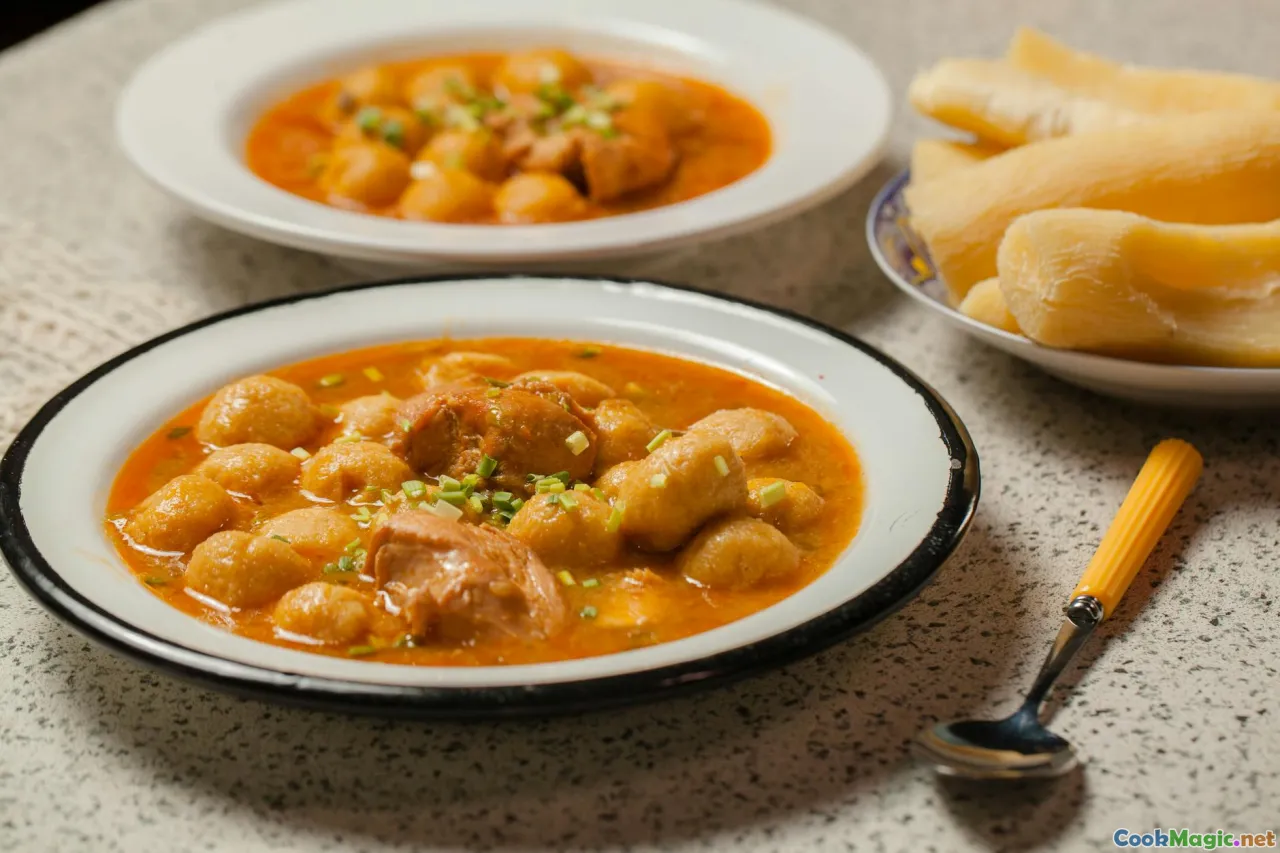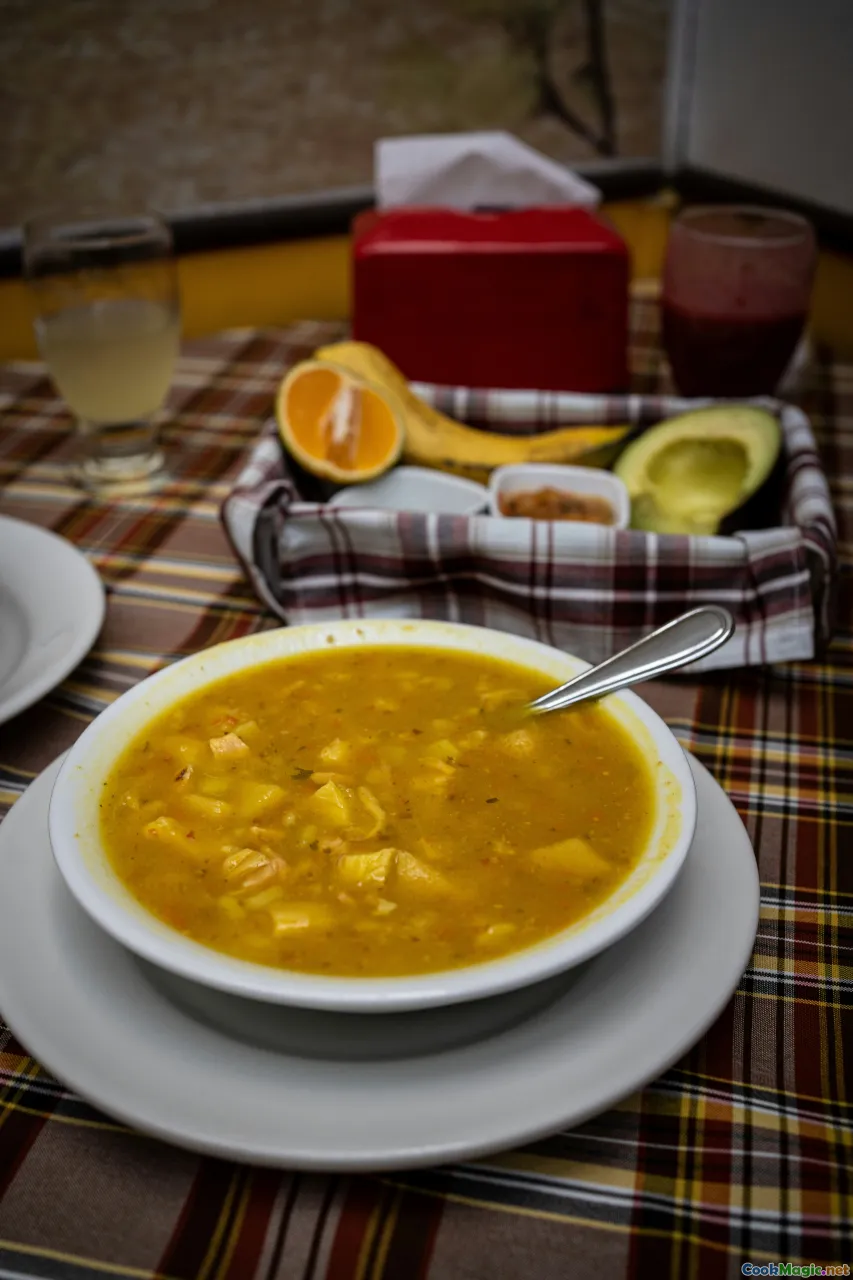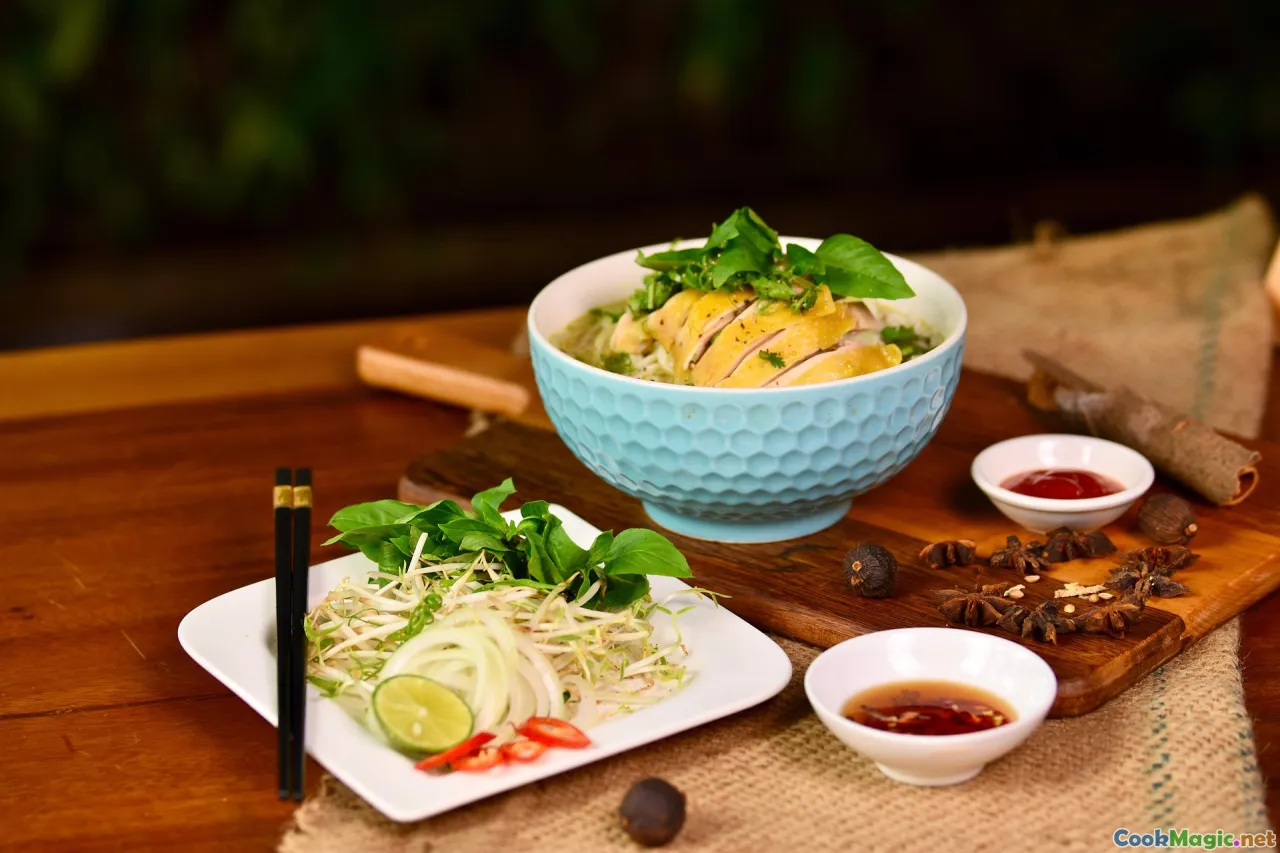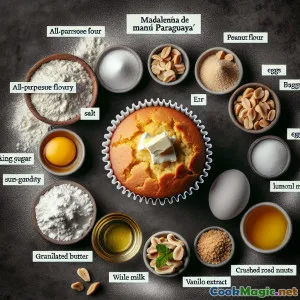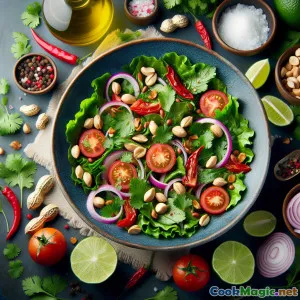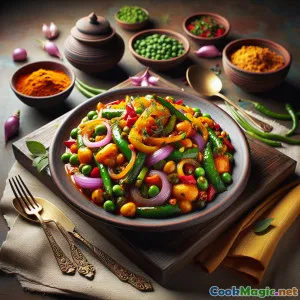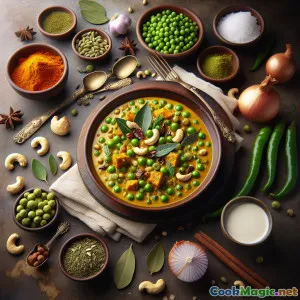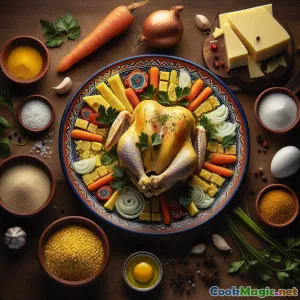
Klassisches Vori Vori mit Hühnchen: Paraguayanische Wohlfühlsuppe
(Classic Vori Vori de Gallina: Paraguayan Comfort Soup)
(0 Bewertungen)0
1,019
August 23, 2025
Problem melden
Zutaten
-
1.2 kg Ganzes Hähnchen
(Cut into parts, skin on for flavor)
-
200 grams Gelber Maismehl
(Fine ground for best dumpling texture)
-
100 grams Queso Paraguay (paraguayischer Käse)
(Use ricotta or mozzarella as alternative)
-
1 medium Zwiebel
(Gewürfelt)
-
2 medium Karotte
(Laid sliced)
-
2 units Selleriestange
(Fein gehackt)
-
3 units Knoblauchzehe
(Gehackt)
-
2 leaves Lorbeerblatt
(Frisch oder getrocknet)
-
3 tbsp Frische Petersilie
(Gehackt, plus extra zum Garnieren)
-
1 large Ei
(For the dumplings)
-
2 tbsp Butter
(Weich)
-
2 tbsp Pflanzenöl
-
1.5 tsp Salz
(Nach Geschmack anpassen)
-
1 tsp Schwarzer Pfeffer
(Frisch gemahlen)
-
2.5 liters Wasser
(Or low-sodium chicken stock for deeper flavor)
(Cut into parts, skin on for flavor)
(Fine ground for best dumpling texture)
(Use ricotta or mozzarella as alternative)
(Gewürfelt)
(Laid sliced)
(Fein gehackt)
(Gehackt)
(Frisch oder getrocknet)
(Gehackt, plus extra zum Garnieren)
(For the dumplings)
(Weich)
(Nach Geschmack anpassen)
(Frisch gemahlen)
(Or low-sodium chicken stock for deeper flavor)
Nährwerte
- Portionen: 6
- Portionsgröße: 1 Schüssel (350g)
- Calories: 447 kcal
- Carbohydrates: 48 g
- Protein: 25 g
- Fat: 18 g
- Fiber: 5 g
- Sugar: 4 g
- Sodium: 780 mg
- Cholesterol: 86 mg
- Calcium: 185 mg
- Iron: 3.5 mg
Anweisungen
-
1 - Prepare Chicken and Vegetables:
Cut the chicken into medium pieces and season with salt and pepper. Dice onion, slice carrots, and chop celery and garlic.
-
2 - Sauté base aromatics:
Heat vegetable oil in a large soup pot over medium heat. Add onion, carrot, celery, and garlic. Sauté until softened and fragrant, about 7 minutes.
-
3 - Brown Chicken:
Push vegetables aside, add chicken, and brown gently for 8 minutes, turning for even color.
-
4 - Simmer Soup Base:
Add bay leaf, 2.5 liters water, and a generous pinch of salt. Bring to a gentle boil, then lower to a simmer. Skim any foam.
-
5 - Cook Chicken:
Cover and simmer until chicken is tender and vegetables are soft (about 30-35 min).
-
6 - Prepare Dumpling Mixture:
Mix cornmeal, grated cheese, soft butter, egg, chopped parsley, and a pinch of salt in a bowl. Gently knead until a soft dough forms.
-
7 - Shape Vori Vori Balls:
With wet hands, form small balls (2 cm diameter) from the dough and set aside. Makes about 24.
-
8 - Add Dumplings to Soup:
Increase heat to a gentle boil. Gently add dumplings to the pot. Cook for 10 min until they float and are cooked through.
-
9 - Final Seasoning & Garnish:
Stir in fresh parsley. Check seasoning; add salt/pepper if needed. Remove from heat and serve hot, garnished with extra parsley.
Cut the chicken into medium pieces and season with salt and pepper. Dice onion, slice carrots, and chop celery and garlic.
Heat vegetable oil in a large soup pot over medium heat. Add onion, carrot, celery, and garlic. Sauté until softened and fragrant, about 7 minutes.
Push vegetables aside, add chicken, and brown gently for 8 minutes, turning for even color.
Add bay leaf, 2.5 liters water, and a generous pinch of salt. Bring to a gentle boil, then lower to a simmer. Skim any foam.
Cover and simmer until chicken is tender and vegetables are soft (about 30-35 min).
Mix cornmeal, grated cheese, soft butter, egg, chopped parsley, and a pinch of salt in a bowl. Gently knead until a soft dough forms.
With wet hands, form small balls (2 cm diameter) from the dough and set aside. Makes about 24.
Increase heat to a gentle boil. Gently add dumplings to the pot. Cook for 10 min until they float and are cooked through.
Stir in fresh parsley. Check seasoning; add salt/pepper if needed. Remove from heat and serve hot, garnished with extra parsley.
Mehr über: Klassisches Vori Vori mit Hühnchen: Paraguayanische Wohlfühlsuppe
Vori Vori de Gallina Tradicional: History & Soul of Paraguay in a Bowl
Vori Vori de Gallina is the ultimate Paraguayan comfort food—a time-honored chicken soup famous for its cheesy cornmeal dumplings. It’s one of those rare recipes where humble ingredients transform into a dish worthy of any family table or celebration.
While vori vori is celebrated across Paraguay, its roots reflect a blend of indigenous Guarani culinary traditions (notably its use of cornmeal) with Spanish colonial influences (the presence of chicken and cheese). The name “vori vori” is onomatopoeic; it mimics the clattering of little dumplings (the vori) as they swirl in a bubbling pot.
This soup isn’t merely about nourishment—each bowl represents a piece of Paraguayan cultural identity, shared around homey kitchen tables and special gatherings alike. The addition of gallina (mature hen) marks this as a richer, deeper-flavored version reserved for feasts, as hens bring richer flavor than young chickens. In modern kitchens, an ordinary chicken works fine, as does a homemade or quality bought stock when time is of the essence.
What Makes Vori Vori Unique?
- Cheesy Cornmeal Dumplings: The hallmark of this dish is definitely the vori vori balls, where cornmeal is kneaded with Paraguayan cheese and sometimes enhanced with a touch of fat like butter. The dough must be well mixed but never over-kneaded, to keep dumplings light.
- GF Option: Naturally gluten-free; cornmeal means no wheat involved!
- Slow Simmering: Authenticity comes from simmering chicken, aromatics, and root veg to coax out maximum flavor.
- Collaboration: Vori Vori is rarely made for one. Gathering hands to shape the dumplings makes preparation a communal joy.
Tips and Tricks
- If you can’t source queso Paraguay, a blend of ricotta and mozzarella gives creaminess and a mild tang. Farmers’ cheese or feta (for a sharper note) works as well.
- Rice flour or whole millet flour can stand in for cornmeal to shake the recipe up for dietary or pantry needs.
- Standard chicken delivers lovely results—rub in a little bouillon paste to inject extra oomph if desired.
- Want deeper veg notes? Add green bell pepper or pumpkin in the base
Serving & Storing
Serve piping hot, adorned with fresh chopped parsley and crusty bread. For leftovers, refrigerate in an airtight container for up to three days; as with many hearty soups, flavors improve after a night in the fridge. If you reheat, add a splash of stock or water as dumplings may expand and your soup thicken.
Cultural Role
Vori Vori’s presence is almost mandatory at family and holiday tables—from wintertime get-togethers to national celebrations like Independence Day. Many a grandmother recalls spending afternoons rolling tiny, perfect vori with grandkids. These rituals turn culinary heritage into a living, shared memory. Regional variations bounce between using beef or wild fowl, but chicken is king.
Regardless of the exact ingredients, the essence of vori vori is kindness and comfort: the warm embrace of a meal enjoyed in community.
Personal Thoughts
If you long for genuine, heartfelt cuisine, Vori Vori offers an authentic taste journey to Paraguay’s homes and history. Each bite of this simple, beautiful soup will transport you to grassy estancias and modest village kitchens—a world apart yet enveloped with universal love of food, family, and seasonal rhythm. Add this recipe to your repertoire and you’ll always have a show-stopping dish that soothes not only hunger but souls as well.

